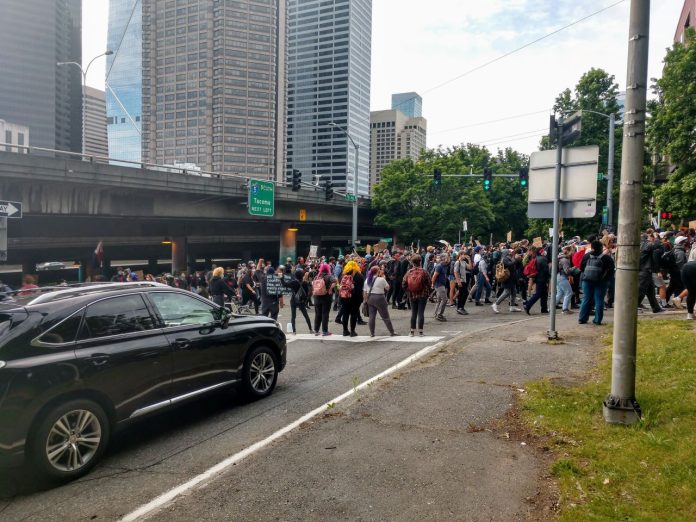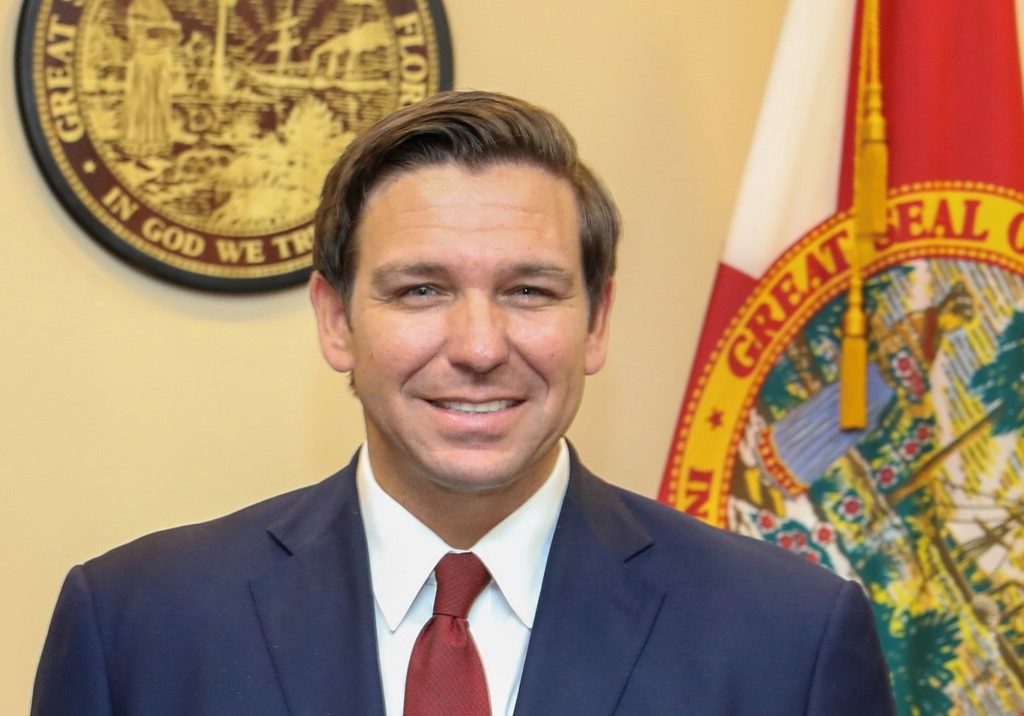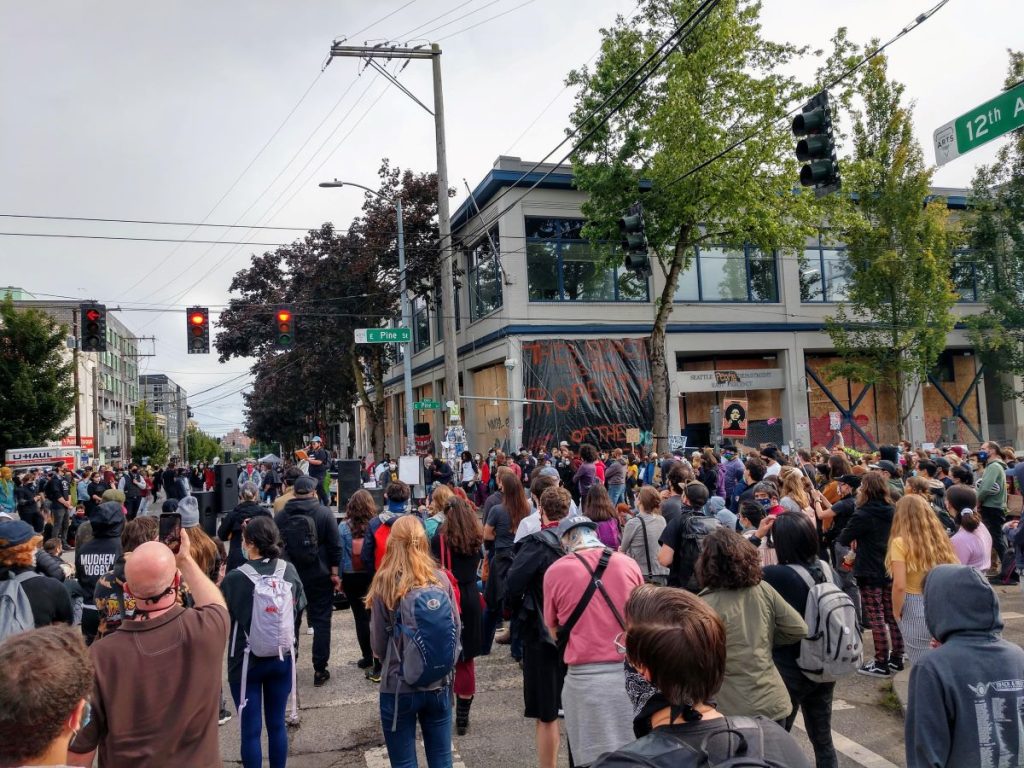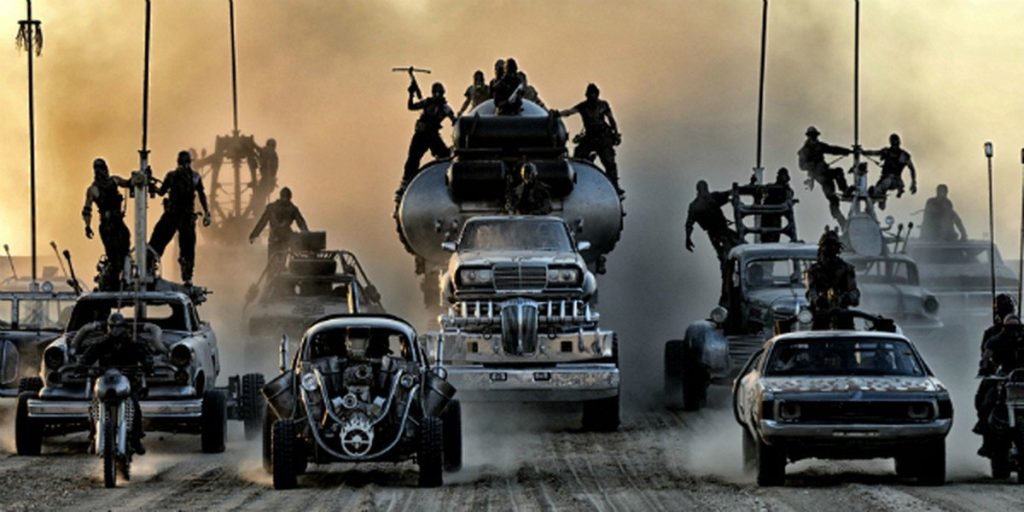
Last week, Republican Florida Governor Ron DeSantis signed an anti-protest bill into law, enshrining the right to run over protesters with automobiles and kill them without facing civil damages. DeSantis promised “swift penalties” to protests that shut down highways, which the law also authorizes. On Wednesday, Oklahoma’s Republican Governor Kevin Stitt signed an even harsher bill that guaranteed not just civil immunity, but also immunity from criminal charges. As long as a motorist claims it was unintentional, they’re absolved of charges.
Several other Republican-run states like Iowa, Missouri, and Tennessee are rushing to follow suit, and 34 state legislatures including Washington state have considered anti-protest bills, according to the International Center for Not-For-Profit Law’s tracker. Thankfully Washington state’s two anti-protester bills this session, SB 5456 and SB 5310, failed. Senator Kevin Van De Wege (D-Sequim) was among the sponsors of SB 5310.
It’s astonishing that we reached this point in our society’s numbness to violence against protesters and people, and using streets in any way other than operating a motor vehicle. It’s no empty threat and could lead to a wave of vehicular slaughter and maiming, and have a chilling effect on the First Amendment right to protest that is supposed to be guaranteed to every American. More than 26 million people protested in America last year according to The New York Times‘ tally, and the overwhelming majority of protests were peaceful. The American Civil Liberties Union (ACLU) has pointed out these laws are a “solution” in search of a problem.

The Capitol Hill Organized Protest had a run-in with a right-winger intent on vehicular slaughter in June. A man veered his car into protesters, got out brandishing a gun, and shot a man trying to disarm him — a hero who explained what happened with a tourniquet on his arm. If this angry man hadn’t been impeded, he could have plowed through a crowd of people at high speed. In response to incidents like these, protest leaders organized car brigades and bike brigades to “cork” intersections seeking to prevent impatient and/or disgruntled motorists from driving into protest routes and targeting people protesting.
This was far from an isolated incident. Researcher Ari Weil counted 72 protester ramming events in just over a month near the height of Black Lives Matter protests last year, as Alex Pareene reported in The New Republic.
Ari Weil, a researcher at the Chicago Project on Security and Threats, counted six states that considered laws shielding drivers who attack protesters in 2017, but most of those “hit and kill” bills (as the ACLU refers to them) went nowhere. It took a few more years for the right-wing propaganda apparatus to fully numb conservative consciences, and prepare them to openly endorse an idea as plainly depraved as this one. In the meantime, the car attacks kept coming: In 2020, Weil tracked “72 incidents of cars driving into protesters across 52 different cities,” over the span of just over a month. The online far right memed about running over demonstrators regularly, and cops openly encouraged it in social media comments. Cops also, in cities such as New York and Detroit, participated in the practice themselves. In Boston last year, Police Sergeant Clifton McHale was recorded on a police body camera bragging about hitting demonstrators with a police cruiser. He was placed on administrative leave when that footage was surfaced by reporter Eoin Higgins. He is now, Higgins reports, back on desk duty.*
Alex Pareene in The New Republic
Emboldened by hit and kill bills and egged on by bloodthirsty police officers, these ramming incidents could become much more frequent and deadly. These laws make an already terrible system worse — 40,000 people die in car crashes every year in the United States, and pedestrian deaths are on the rise. Cars keep getting bigger, heavier, and taller, which only increases their lethality, especially when people walking, rolling, or biking are involved in collisions.
The government (whether city, state or federal) should regulate the size of vehicles to lower the risk of traffic deaths and injuries. Super-heavy personal vehicles and bull bars should be banned in cities and vehicle fees should be weight-based to encourage lighter vehicles. Personal vehicles simply do not need to be weighing in anywhere close to three tons. Studies show heavy, high grill cars like Hummers, Ford F350 trucks, and Ram trucks are more lethal and much likelier to kill pedestrians in collisions. If right-wing extremists are going to treat their cars like weapons, we need to regulate cars like weapons.
Instead of making streets safer and pursuing bold climate action, state legislatures, including Washington’s, keep investing in highway widening and expansion to speed up cars and induce more car trips. A wise alternative would be focusing on maintenance and complete streets to encourage urban development, calm traffic, and prevent deadly collisions. We also need tougher laws on reckless drivers.
Safe streets advocates regularly point out that our existing traffic laws and the biases of police officers, prosecutors, and judges already make it very hard to convict motorists of injuring or killing people walking, biking, or transit. Proof that a motorist was drunk or on their cell phone is often the only route to finding them guilty of manslaughter let alone murder. Civil charges are often the only recourse for people hurt in crashes, especially if they were walking, rolling, or biking or the families of those killed in crashes. Hit and kill bills seek to take that avenue away in demonstration situations.
Police accountability advocates, meanwhile, are all too familiar with the difficulty of proving malicious intent when it comes to police officers who kill people in the line of duty. Derek Chauvin (the Minneapolis police officer who strangled George Floyd to death) was the exception to the rule of police never being found guilty of murder while on the job. The laws seem to deputize every wannabe vigilante with the same license to kill that trigger-happy cops enjoy.
American cities saw a massive uprising of protests in 2020 as the graphic murder of George Floyd captivated a nation. While some saw this as a Civil Rights moment to be seized for the betterment of a nation, conservative leaders are seeking to channel bitterness and fear to bring about a Mad Max: Fury Road type reality to American streets. Who would actively choose to live in that reality?
We need to fight back. It’s not just the hit and kill laws that have to go — and hopefully even the right-wing John Roberts Supreme Court strikes them down, though don’t hold your breath. The national conversation around racial justice and accountability needs to continue. We can’t brush murderous intent in hit-and-kill laws under the rug. We need to call it out and call in people who are falling for that messaging to embrace a different way of being and examine their prejudices.
Transportation departments have to design our streets to be fundamentally safer. That means designing for lower speeds, fewer cars, and bollards and barriers to protect high traffic pedestrian areas and bike lanes. And we need way more pedestrianized areas where people walking, rolling, or protesting can let their guard down and relax. We also need fewer cops with guns just looking for an excuse to assert their dominance over community members. We need to respect protesters and ensure police actually protect and serve rather than promote and escalate violence and target Black and Brown people for harassment. Given the long resistance to meaningful reform from police departments and police guilds, more funding must go to actual public safety rather than bloated police budgets.
Doug Trumm is publisher of The Urbanist. An Urbanist writer since 2015, he dreams of pedestrian streets, bus lanes, and a mass-timber building spree to end our housing crisis. He graduated from the Evans School of Public Policy and Governance at the University of Washington in 2019. He lives in Seattle's Fremont neighborhood and loves to explore the city by foot and by bike.



